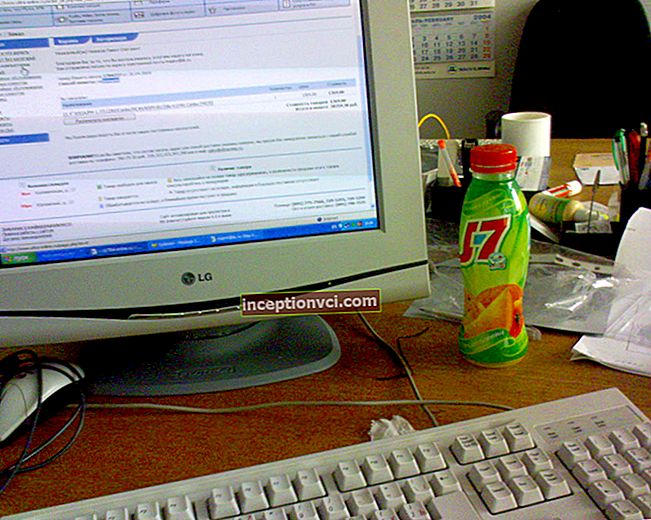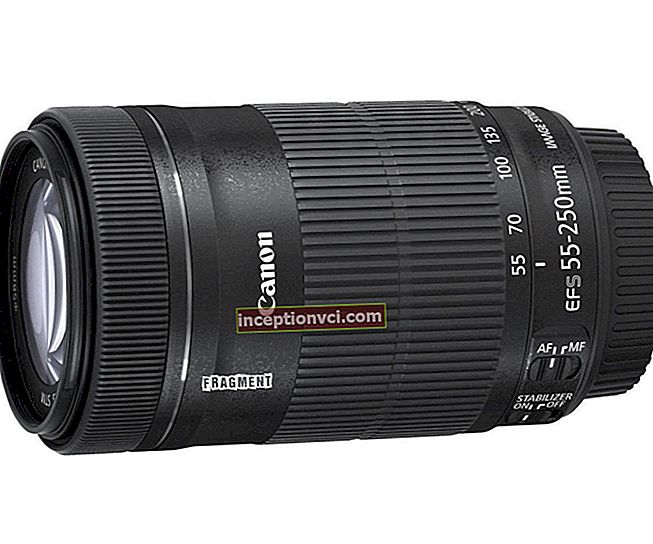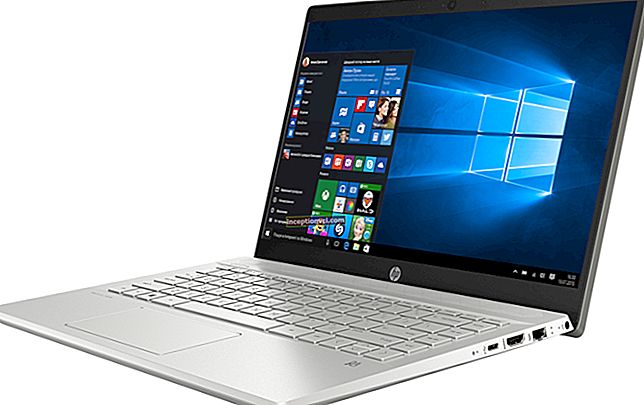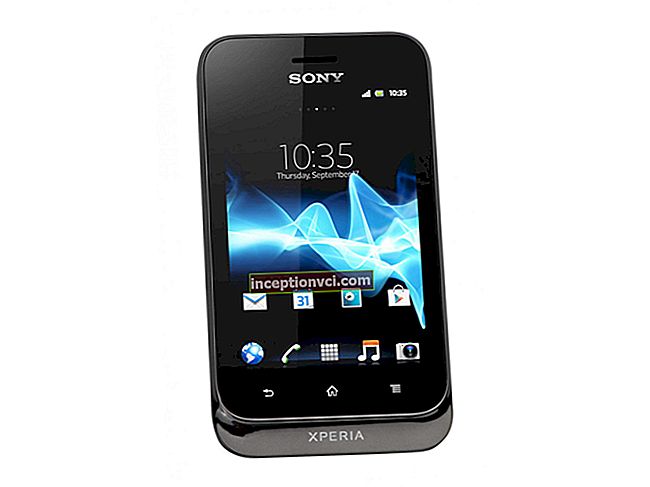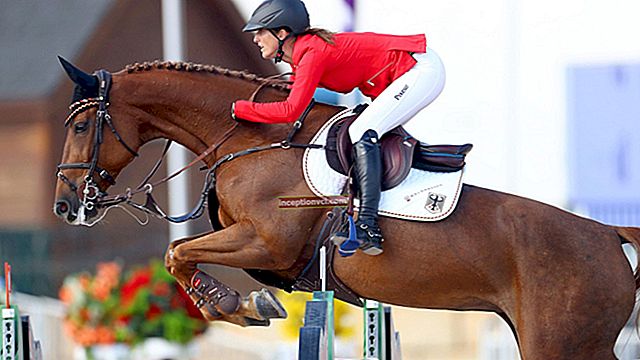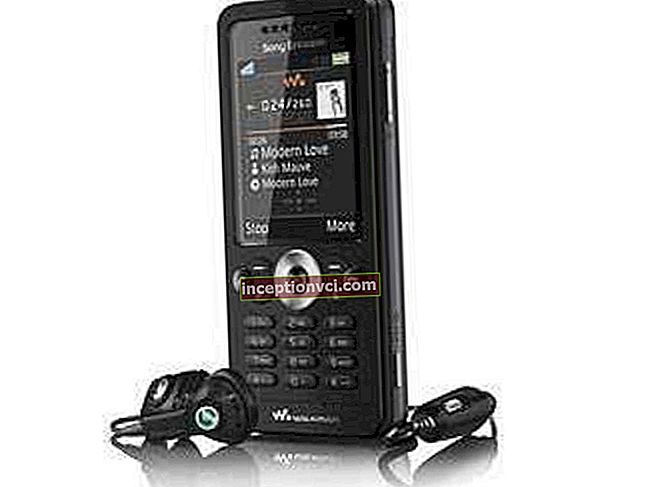MODES: PANORAMA, SCN, PASM, VIDEO
Using the virtual disk, you can switch the shooting mode. It is displayed when accessing the menu, or immediately when you press the central button on the Navipad (provided that it is not reprogrammed for a custom function). There are 10 positions on the "ring" - classic PASM exposure modes (can be perceived as advanced), two fully automatic modes - SCN and i-AUTO scene programs, "Anti-motion blur", Panoramic shooting and shooting 3D panoramas. The largest number of shooting parameters are available in PASM modes. I would like to say that in the "P" mode a program shift has appeared (the ability to synchronously change the value of 2 exposure parameters with a constant exposure) - this is done by rotating the navipad dial. Hidden under the virtual ring SCN is a set of 8 typical for Sony NEX cameras, scene programs, including: Portrait, Landscape, Sports, Macro, Night portrait, Sunset, Hand-held Twilight and Night Scene. The scenes are strictly prohibitive, that is, you cannot change most of the shooting parameters (WB, ISO, metering type, etc.). In addition, exposure compensation cannot be entered. Speaking of Macro Mode, I would like to note that compared to compact cameras, cameras with interchangeable lenses do not optically adapt to focusing at very close distances. To get true macro shots, as with DSLRs, you need to use specialized macro lenses. I would like to note a rare feature of the 18-55 / F 3.5-5.6 lens - as the zoom increases, its minimum focusing distance does not increase. It is nearly constant over the entire zoom range and is approximately 15 cm from the front of the lens to the subject. The "Twilight Handheld" mode is located somewhat apart from the rest of the plot programs. The bottom line is that in the 5N, as in the early NEX models, there are several modes, the relationship of which, based on the names, may seem unclear - Hand-held Twilight, Panoramic shooting (normal and in 3D), Eliminate motion blur, and HDR (High Dynamic Range). But they are all built on processor algorithms (combining several shots, shifted relative to each other) and the possibility of fast continuous shooting. Modes "Eliminate motion blur" and "Twilight from hand" are located in different places: the first - on the virtual disk, the second - among the scene programs. Despite this, their work is very similar. The device quickly takes six shots, which are combined into one, this allows you to get a lower noise level than in a single shot with the same exposure parameters. The difference is that with Anti Motion Blur mode, the camera achieves the fastest possible shutter speed (to eliminate the famous blur), and for this it easily goes to increase the ISO sensitivity to ISO 6400. In the Hand-held Twilight mode, the priority is a high-quality picture with minimal noise, and here the camera tries to use low ISO (but if there is really little light, the sensitivity can also rise to 6400). The illustration below shows an example of the device's operation in the Handheld Twilight mode, on the left, and an image taken in manual mode with the same exposure parameters (ISO 6400, shutter speed 1/40 second, aperture F / 5.6, Auto-WB, style “ Standard ”, f = 82 equivalent mm, tripod). Panoramic shooting is organized in a convenient, simple and effective way - I think most of the readers of this review are already familiar with it.First, you set the direction of camera movement in the menu (there are four of them in total: left, right, down, up), and then, by pressing the shutter release, you simply move the camera in the chosen direction as if you were filming a movie. The device clicks the shutter, the display shows the general sweep predicted by the camera, and the marker of the current position moving along it. In order to drive the camera at a certain optimal speed, it will take time - to do it very slowly or quickly the camera will not allow. Upon completion of the shooting, the device thinks for a while ... and now you get a ready-made panoramic shot. As a rule, the gluing quality is very good. The camera not only makes imperceptible joints, but also manages to handle moving objects correctly. Although this does not always work out, sometimes you can notice double cutoffs of passing vehicles, but you should not demand the impossible from the camera - in general, the function is very good. A three-dimensional panorama is shot in a similar way. The camera creates two files - standard JPEG and MPO. I do not have the equipment to adequately assess the image quality, so I will not talk about the quality of a 3D panorama. One of two types of panorama is selected in the menu - Standard or Wide-angle. For the first case, with the horizontal orientation of the device, a file with a resolution of 8192x1856 pixels will be obtained, for the second - 12416x1856. When shooting a "vertical panorama" the resolution is 3872x2160 and 5536x2160 pixels, respectively. CREATIVE PHOTOS, EFFECTS, I-AUTO Intelligent auto mode "i-AUTO" is intended for beginners or for those who simply do not want to go into camera settings, preferring to shoot on the automatic. The device analyzes the shooting conditions and recognizes the scene (both one and several): Night portrait, Night view, Backlight and the like. The icon of the recognized mode appears in the upper left corner (in the illustration below - Macro). Interestingly, i-AUTO has a simplified Photo Creativity interface. Analogue of the "Live Guide" interface in Olympus PEN cameras. In fact, the usual, classic shooting parameters are adjusted - shutter speed, aperture, color saturation, exposure compensation, and the like. But this control is realized not by direct adjustment of values in a numerical format, but with the help of simple concepts and tips that are available even to a novice photographer. Creative Photo mode was first introduced with the NEX-C3, but it is more convenient with the NEX-5N. In the lower half of the screen, you can see five options - Picture Effect, Intensity, Color, Brightness, Background Blur. An arc appears on the right side representing the selected parameter. Turning the navipad ring moves the colored marker, thereby changing the value of the current parameter. For example, start with "Blur the background". At first glance, a great tip for beginners. Move the point along an arc - from the maximum open aperture ("Blurred") to closed ("Sharp"). In teleposition, the lower part becomes inaccessible (gray) - the maximum possible opening of the diaphragm is reduced. In fact, the Background Blur tool is not that simple. If you strictly follow the prompts and instructions of the camera, you can easily get the result exactly the opposite of what you intended. I have already spoken about this in my review of the Sony NEX-5 - unfortunately, the manufacturer has not changed anything in this regard. If you want to get a more "sharp" background, then move the marker up, the diaphragm closes, the depth of field increases (the background becomes sharp). But this is all in theory. In practice, several factors will act simultaneously. Firstly, the picture will be blurred due to the diffraction of rays at the miniature aperture (wanting to get the background as sharp as possible, a beginner photographer will reach an aperture value of F / 29 or even F / 32).Secondly, a closed aperture will lead to a decrease in exposure, which the automation tries to compensate for (except in cases of an overly illuminated scene) or an increase in shutter speed (which, in turn, increases the risk of blurring of the image), or an increase in light sensitivity (increases the degree of digital noise). With the combined action of these 3 factors, it is unlikely that the picture will turn out that the amateur photographer is counting on. Only one of the above factors is at play here. The beginner, relying on the instructions of the "Blur Background" interface, chooses a high aperture value - F / 22. What's stopping him? Fragments of images are shown below. The aperture is f / 22 (on the right side) under the action of diffraction from a small aperture, the sharpness of the image turned out to be significantly reduced. If the photographer had used an F / 5 value, it would have been sharper (picture on the left). However, based on the interface, this is difficult to guess. In fact, the Background Blur tool is purely about depth of field. In landscape photography, there is a certain optimum, after which you should not close the aperture - but if an amateur realizes this, then it is difficult to call him a beginner. At the other end of the range, the setting with Background Blur is also ambiguous. If the goal is to blur the background, then the diagram on the display gives the erroneous impression that the best option is to choose the wide-angle position and set the aperture value equal to F / 3.5. After all, according to the illustration, it turns out that as the focal length grows, the "blur" decreases (the inaccessibility zone begins to expand on the arc). So the maximum blur seems to come from a wide angle. But, in reality, this is also not entirely true. Let's go back to the Creative Photo interface. The rightmost, fifth parameter is Picture Effect. Picture Effect is a group of picture processing effects. It is interesting that the processing is performed at the time of shooting, and is not superimposed in the playback mode on the already finished pictures. Through the Creative Photo interface, you can enable one of 11 types of processing - Manipulation with color (Pop), Retro, Toy camera (Toy), Posterization (poster, black and white and color), Soft Hi-Key , Monochrome High Contrast Image (HC BW), and Color Emphasis (Green, Red, Yellow, or Blue). Picture effects can also be enabled in exposure modes, through the "Brightness" section of the menu. It's a little strange that their list is slightly different from the one available in the Creative Photo section. Additionally, there are effects: HDR Painting, Soft focus, Miniature (gives a street scene a mock-up look shot by macro photography). Some effects have adjustment options. The Rich BW (Rich Monochrome) effect is very similar to HC BW (High Contrast Monochrome), but works a little differently - it uses HDR technology. Such a rich opportunity is undoubtedly good, but such an abundance dazzles the eyes. It so happens that when you want to use a certain function (or mode), you cannot remember where it is located. Hand-held twilight is among the plot programs; Eliminate motion blur - highlighted position on the virtual ring of modes (and these are related modes); HDR function - under Brightness; Rich BW - among the effects of the picture, which are activated through the section "Brightness". After communicating with the device, an unpleasant feeling remained - the organization of all functions, modes and capabilities is not optimal enough. VIDEO SHOOTING I already said that the Sony Alpha NEX-5N can record Full HD video (up to 1080p) in AVCHD format (and other resolutions in MP4 format). The picture quality when shooting video is pretty decent. Autofocus is functioning. It can be helped by not fully pressing the shutter release, but I am more than sure that the process will be accompanied by yaw, which will later be seen on the recording.Manual focusing is also functional (you need to select "MF" mode in the menu), thanks to which you can make effective focus transitions. SETTINGS MENU AND VIEWER MODE View / Playback mode is activated by the button on the top of the camera. The DISP (Up) navigation button switches the display of information on the screen. There are only three such options - a clean frame, short parameters and detailed parameters with a reduction in the picture. I really liked that when BB is set to "By Sample", then the color temperature determined by the camera's automation is displayed - for example, 4200 Kelvin. To enlarge the image, you need to press the central navipad key, then you can adjust the scale by turning the navipad ring. In this case, a full frame is displayed in the corner of the display, in which the viewed area is indicated by a red rectangle. It can be moved around the frame using the navipad buttons. Scrolling through pictures is not fast. The display of images in a reduced form is implemented in a rather inconvenient way - in fact, like in previous NEX models, nothing has changed in this sense. For standard display of index frames on the screen, you need to go to the menu, and there, in the View / Playback item, select the "Index Image" section. I have never seen such a solution in any other cell. Another disappointing viewing feature is the separation of photos and videos. You can watch either photos or videos. To switch between them, you need to go to the menu. In addition, since the NEX-5N has the ability to record video in different formats (AVCHD and MP4), access to videos is also separate. Whatever makes the manufacturer go for such a strange decision - ideological considerations or software access problems - it is difficult to come to terms with it. After all, cameras from other manufacturers do not suffer from this problem. Often, for added convenience, it is possible to filter the footage by photo / video category, but if you don't want this, you can watch everything. Editing of finished photographs in Sony NEX-5N is practically absent. The last item of the intra-chamber menu is "Settings" - the largest in terms of volume, there are about fifty items in it. All of them relate to the general configuration of the device, so frequent access to this menu item is unlikely to be necessary. However, I would like to see the reprogramming of the buttons closer. In the Sony Alpha NEX-5N, three types of distortion are corrected at the software level - vignetting (darkening at the corners of the frame), distortion (geometric distortion - cushion and barrel) and chromatic aberration (color contouring of high-contrast objects). Enabling correction slows down high-speed burst shooting a bit, but you don't notice it in single shooting. The effects of the correction are not displayed at the moment of shooting - that is, you can easily observe barrel distortion in the wide-angle position of the lens and the pillow in the tele-position - but when the photo is taken, the curves are miraculously straight. In connection with the appearance of an adapter (aka LA-EA2) in the NEX system, it became possible to connect third-party lenses, and AF micro-adjustment for various lenses appeared. In the “LCD Brightness” section of the setup menu, you can not only manually adjust the display brightness, but also enable “Sunny Weather”. At the same time, the screen brightness is increased many times, and the image becomes perfectly distinguishable on a very sunny day, without exaggeration or exaggeration. Quite a useful and rare function that is extremely rare in cameras. However, the battery in this mode starts to run down noticeably faster. Let's summarize Benefits disadvantages Ergonomics 7/10 The developer is constantly working on the control system, the shortcomings of which I mentioned in the reviews devoted to NEX-3 and NEX-5. Most of the shortcomings have been eliminated, and the programmable keys have significantly improved the configurability of the device. The appearance of the touch screen in the NEX-5N model has added several interesting functions, the control has become a little more convenient. However, in my opinion, the potential of the touchscreen is not fully exploited. In general, the convenience and freedom of control of the device is based on the minimum number of controls. The logic of work is also not flawless. Users wishing to take an active part in camera control will find themselves face-to-face with the need for constant menu dives. Changing the parameters turns out to be labor-intensive, the work is slow. But if you use the NEX-5N exclusively in automatic modes, and control is reduced to switching between them, then the ergonomics will seem very acceptable to you. Given the shortage of buttons, contextual functions turned out to be the optimal approach. The built-in system of tips and tricks is a useful and handy "feature" for beginners. Functionality 10/10 Although some of the performance nuances of the NEX-5N leave much to be desired, and most of the points I have noted in the “Disadvantages” column relate to the functionality of the camera, the richness of various functions is extremely high. Many parameters are at the level of professional SLR cameras and sometimes even surpass them. Multi-frame fusion technology is often used - panoramic shooting, HDR technology, Handheld Twilight mode and others - useful tools that can be used in everyday shooting. Image quality 10/10 High quality images, on par with average SLR cameras. The optimized processor and new sensor have improved almost every metric by which image quality can be judged. Software correction allows you to get rid of various types of distortion. The range of light sensitivity has expanded even more, while the image quality remains quite working even at high values. Value for money 9/10 With the quality of images and functionality that the NEX-5N provides, we can say that the camera is inexpensive. Overall score 9/10 While ergonomics continues to be the Achilles' heel of the NEX system, the 5N has proven to be an excellent camera. Great image quality, versatile and rich functionality. Remember, the NEX-5N is also a good camcorder. I want to talk about the development of the NEX system as a whole. Lenses and many other accessories are available, and the appearance of a special adapter (LA-EA2) with built-in phase detection autofocus, in my opinion, is a very significant event for all "mirrorless" technology. Now owners of Sony NEX cameras can turn their cameras into a DSLR - with fast autofocus and the ability to install any optics with an "A" mount.











































